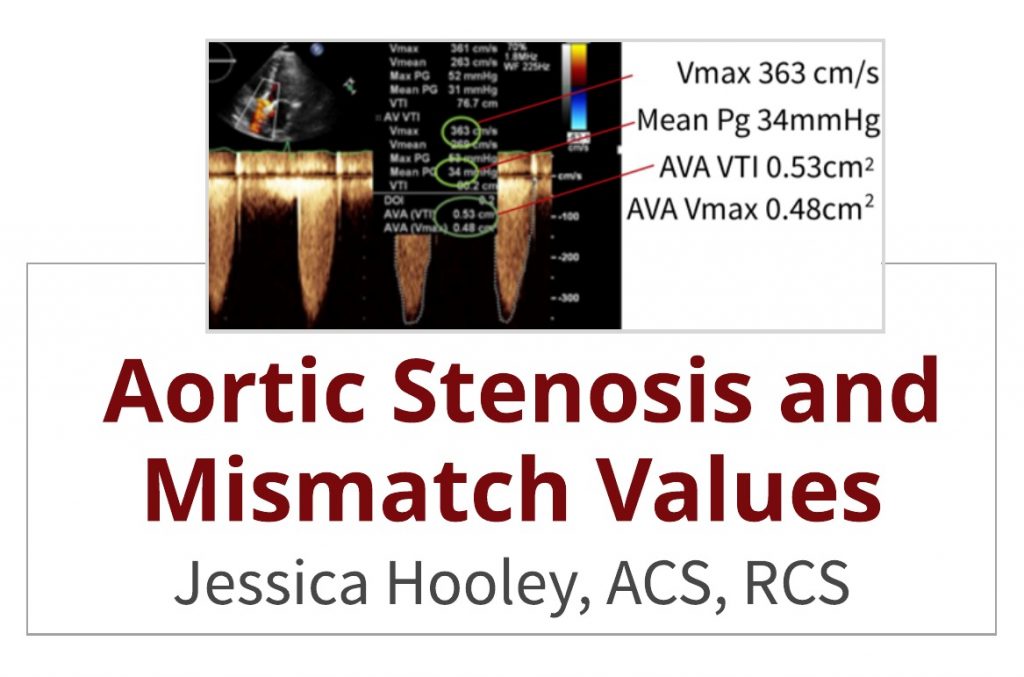
In the past, we have written articles on aortic stenosis and best practices for performing the continuity equation. It’s great to read blogs but it is important to apply this knowledge to our everyday practice. That is why this week we asked experienced sonograher, Jessica Hooley, ACS, RCS, to share some real life examples of aortic stenosis and mismatch values and provide us with some tips and recommendations.
Please be sure to check out the Educator Spotlight this week to learn more about Jessica and her advanced experience within echocardiography. Take it away Jessica….
I would like to share some everyday examples and tips to help ensure our continuity equations are accurate. We all know it can be hard to get all three of our numbers (max velocity, mean gradient and AVA) to all fall into the same category of severity for AS, but there are things we can do to help optimize this and make sure we are doing our best to quantify aortic stenosis.
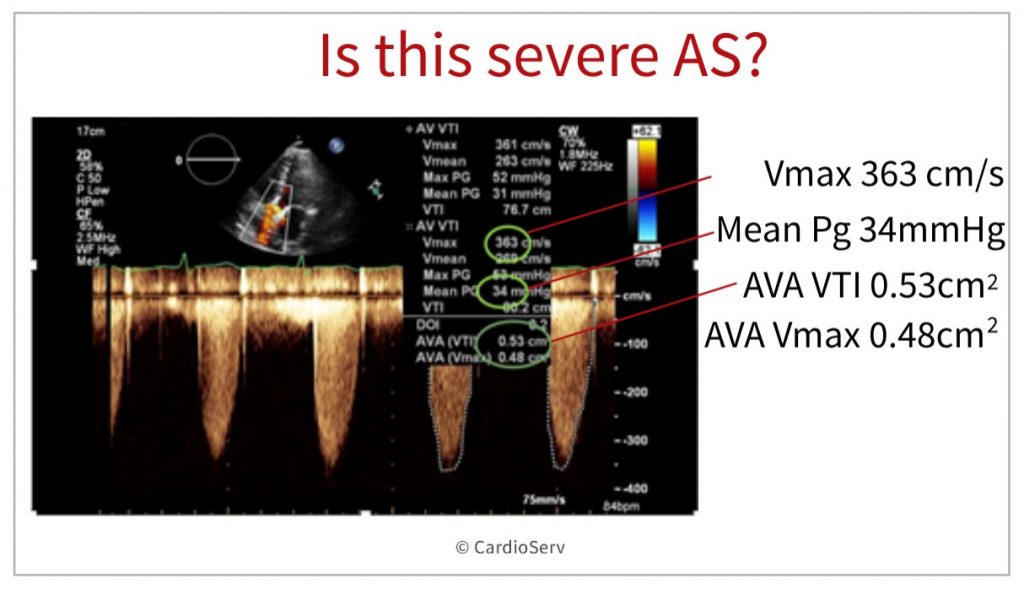
Lets first assess the values obtained in this image. Below is the reference table to refresh your memory.
So…which one is it? Severe or moderate aortic stenosis? Whenever we are faced with discordance of data, it is important to always first rule out any possible errors.
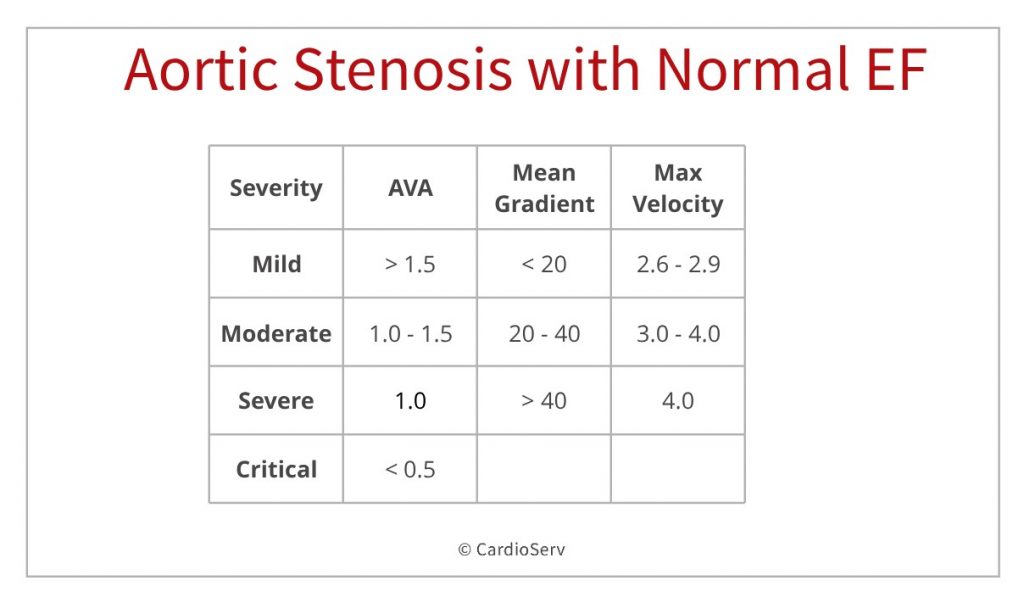
With these pitfalls in mine, lets return back to the case study. In reviewing images from the case study we were able to rule out Doppler alignment errors. The spectral Doppler looked to have proper Doppler alignment and the spectral tracing was dense and filled in.
Next, we then assessed the LVOT diameter. How accurately was the LVOT diameter measured?
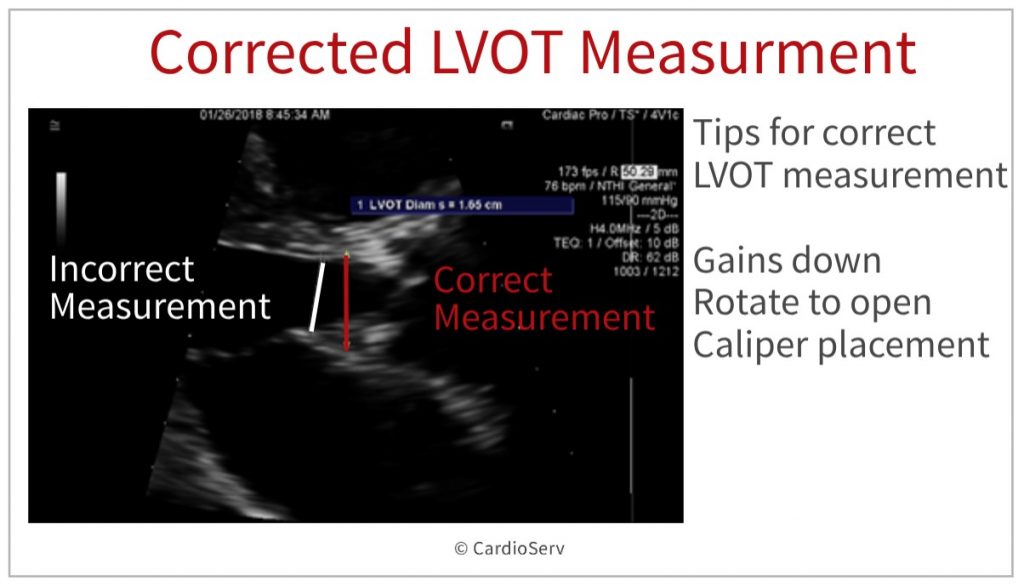
After reviewing the echo, the LVOT diameter was found to be the culprit.
AVA Calculation by continuity equation

I know, back to school, but this equation is very important to remember!! You can review an in-depth review of the continuity equation from a previous blog article here. The additional tips that I would like to provide include an easy way to help you figure out HOW these numbers affect your AVA.
Below demonstrates just how much a change in the LVOT affects the calculated AVA. This example is similar to our case study. Both examples have Doppler values that fall in the moderate stenosis range. Let’s see what happens when we change only the LVOT diameter value!
Wow, by increasing the LVOT diameter value from 1.65cm to 2.1cm, we see how the calculated AVA increased from a 0.7cm2 (severe AS) to 1.1cm2 (moderate AS)!! I hope this helps show the importance of obtaining an accurate LVOT diameter measurement.
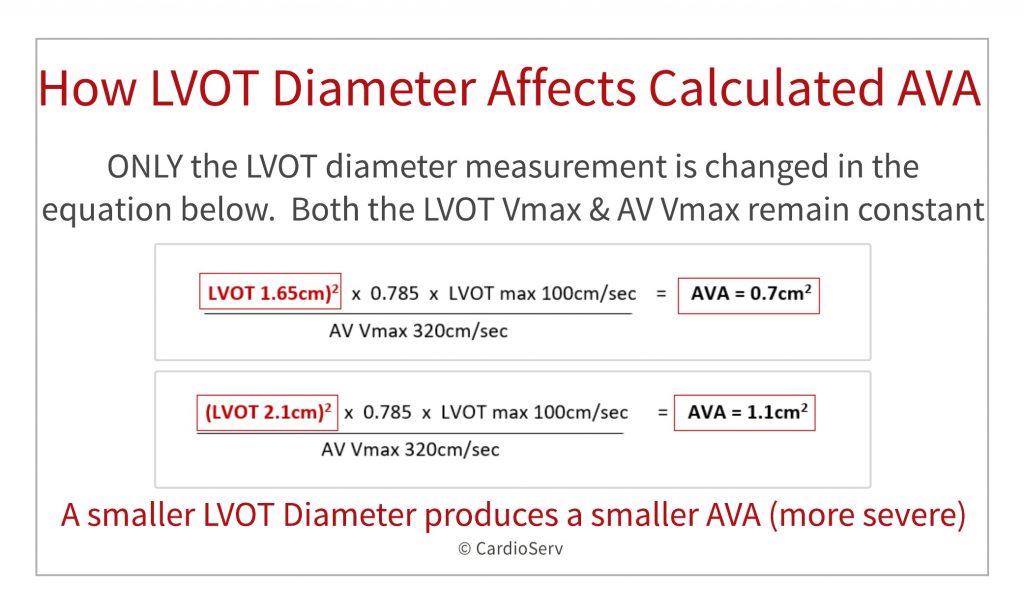
You can view past blogs on accurate LVOT assessment here. From my experience I have found the following tips helpful in optimizing the image prior to measuring the LVOT:
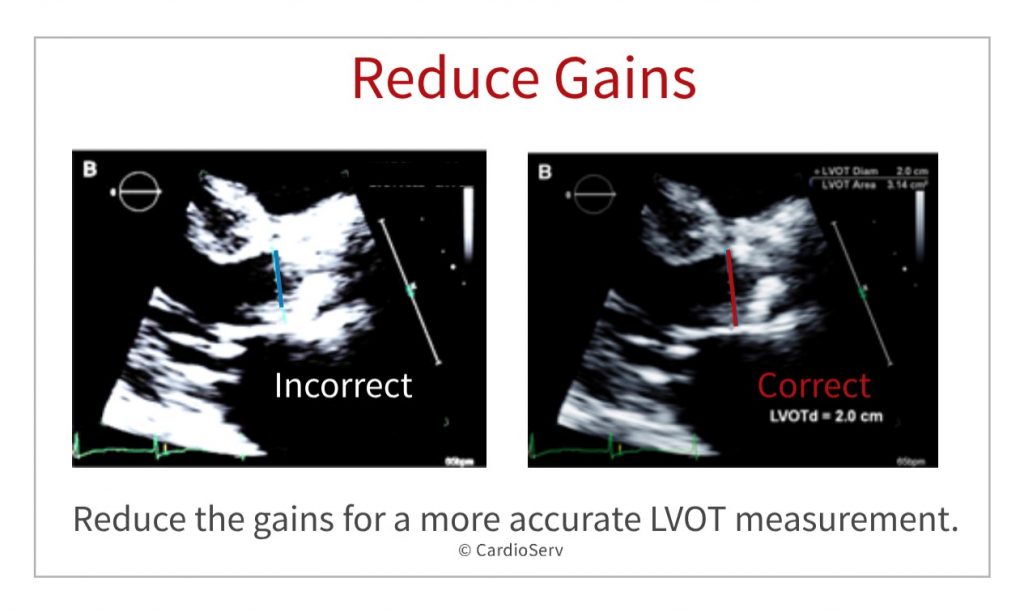
In this image we see how the gains were way too bright making it hard to accurately measure the true LVOT diameter. The LVOT was UNDER-measured. How will this affect my calculated AVA? Remember my continuity trick! The LVOT has a direct relationship with the AVA. If the LVOT is under-called (measured smaller than it actually is) then the calculated AVA will also be calculated smaller than it really is. This gives the false impression of stenosis or exaggerates the severity of stenosis. By turning the gains down and reducing the noise, it became easier to measure accurately.
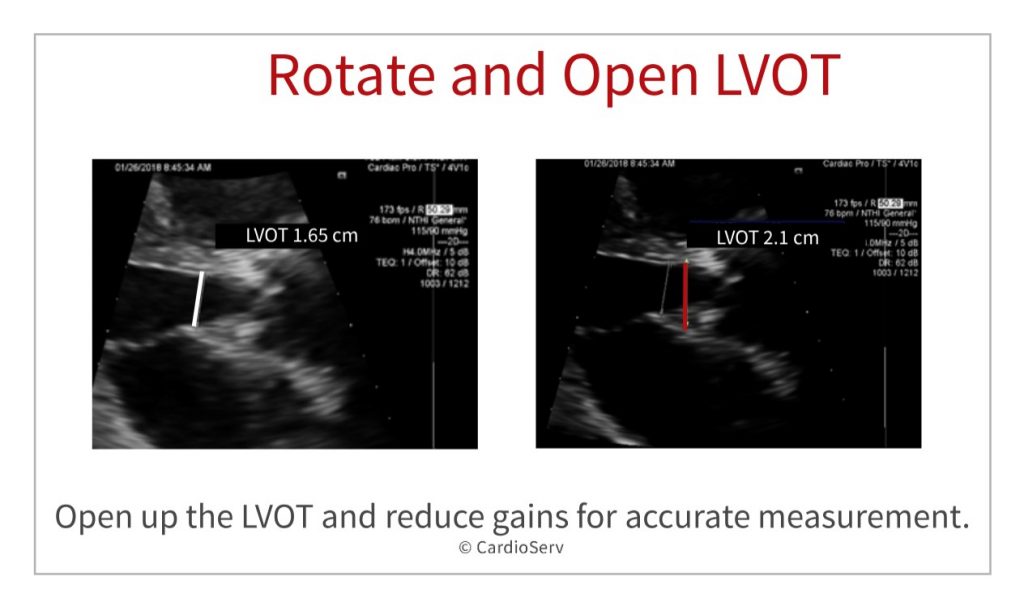
In this image we see once again, the LVOT diameter was measured too small. The gains are too bright, and a little rotation would have opened the valve more. You can also see how the LVOT was measured too far into the ventricle and should have been measured closer to the valve.
As you can see, calculating aortic stenosis takes very precise, accurate measurements. I hope my tips helped as I know sometimes AS can be challenging to assess accurately!
Taking these precautions helps ensure a correct diagnosis so the patient can have the treatment and procedures they need for optimal outcomes.

Jessica Hooley, ACS, RCS
Connect with Jessica on LinkedIn




Mar
2019
Mar
2019
Mar
2019
Mar
2019
Mar
2019
Mar
2019
Mar
2019
Mar
2019
Mar
2019
Apr
2019
Jul
2019
Sep
2019